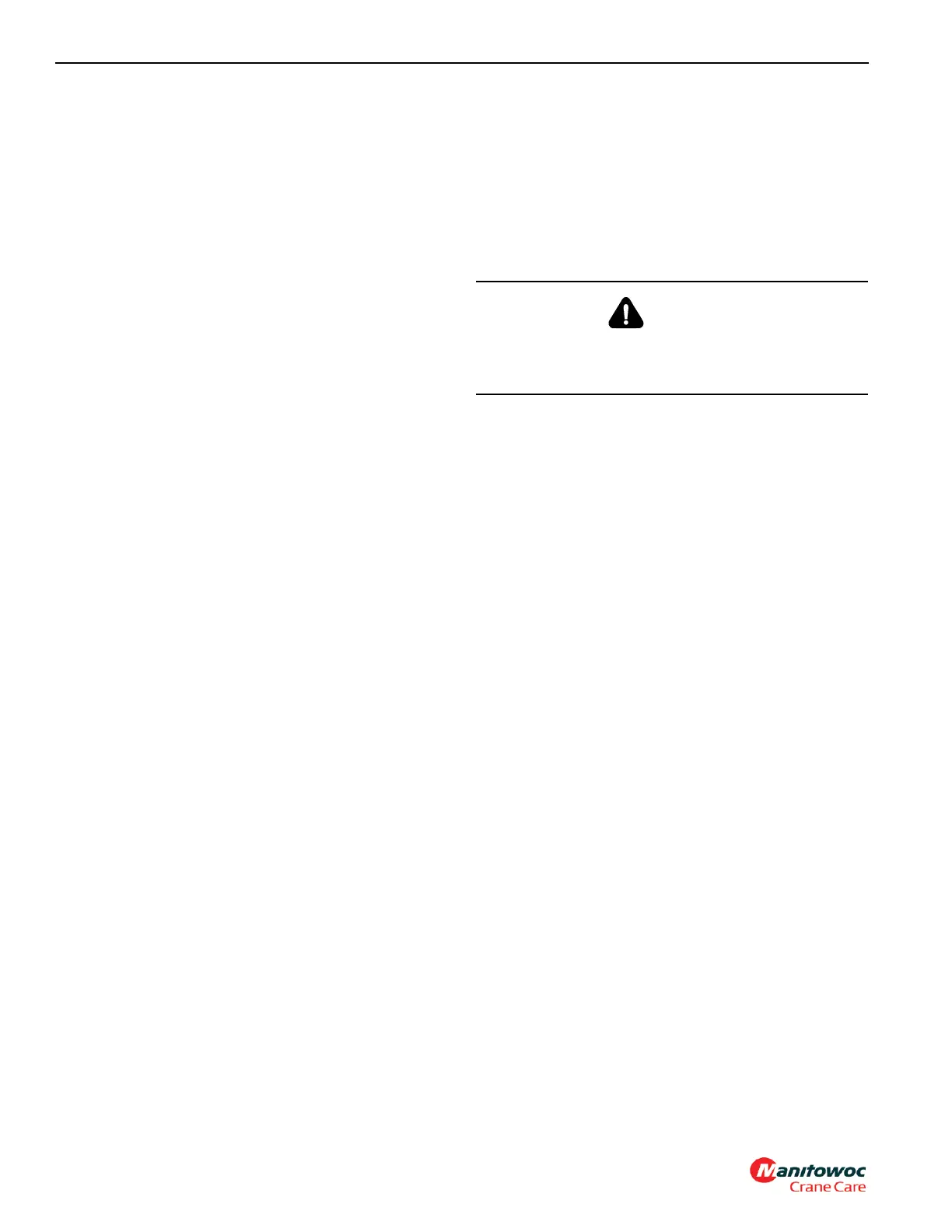POWER TRAIN RT880E SERVICE MANUAL
7-20 Published 11-10-2014, Control # 524-00
and oxygen, and can only be prevented by maintaining full
strength corrosion protection at all times.
For maximum rust, freeze, and boiling point protection, an
AFC-50/50 blended, fully formulated extended life
antifreeze/coolant should be maintained at all times.
Test Equipment
The antifreeze/coolant concentration must be checked using
a refractometer. “Floating ball” type density testers or
hydrometers are not accurate enough for use with heavy
duty diesel cooling systems.
Engine Antifreeze/Coolant Fill Procedure
This procedure is for when the cooling system has been
drained or most of the coolant has been removed. For daily
maintenance procedures refer to Engine Cooling System,
page 9-13.
1. Open air bleed valve on top radiator inlet tube, to allow
trapped air to bleed.
2. Slowly fill the system with an AFC-50/50 blended, fully
formulated extended life antifreeze/coolant. Fill to the
bottom of the surge tank filler neck.
NOTE: A fill rate exceeding 3 gpm (12 l/min) can give a
false reading.
3. Close the air bleed valve.
4. Wait one minute and recheck the antifreeze/coolant
level. Refill as necessary repeating step 2.
5. Run the engine through two (2) thermal cycles and
recheck the antifreeze/coolant level. Refill as necessary
repeating step 2.
Cooling/SCA Maintenance Summary
The cooling system level should be checked every 10 hours
of operation or daily, whichever comes first.
6 Months or 500 Hours
• Check SCA (Supplemental Coolant Additives) Levels
(use Fleetguard kit # CC2626).
If SCA levels are less than 1.2 Units/Gal, add cummins DCA-
4 to maintain desired level.
1 Year or 1000 Hours
• Test coolant for contamination.
Condemning limits are:
Sulfate level greater than or equal to 1500 ppm.
Chloride level greater than or equal to 200 ppm.
The pH level is less than 6.5
Oil or fuel contamination can be identified by odor or
color.
If condemned, flush the system using a mixture of sodium
carbonate and water or an equivalent commercially available
flushing agent. Refill system with fully formulated extended
life coolant. Refer to Engine Cooling System, page 9-13.
NOTE: Remove the radiator cap and open the air bleed
valve when draining the system to ensure proper
draining.
Cleaning
1. Coolant shut-off valves to heaters and other accessories
should be open to allow complete circulation during
cleaning, flushing, and draining. Run the engine with
radiator covered if necessary until temperature is up to
operating range 160 to 180°F (71 to 82°C). Stop the
engine, remove the radiator cap, and drain the system
by opening the drain cocks on the radiator.
2. Allow the engine to cool, close the drain cocks, and pour
the cleaning compound into the surge tank according to
the directions. Fill the system with water.
3. Place a clean drain pan to catch the overflow, and use it
to maintain the level in the radiator. Do not spill the solu-
tion on the vehicle paint.
4. Replace the radiator cap and run the engine at moderate
speed, covering the radiator if necessary, so the system
reaches a temperature of 180°F (82°C) or above, but
does not reach the boiling point. Allow the engine to run
at least two hours, or according to recommendations of
the manufacturer of the cleaning compound, at 180°F
(82°C) so the cleaning solution may take effect. Do not
drive the vehicle or allow the liquid level in the radiator to
drop low enough to reduce circulation.
5. Stop the engine as often as necessary to prevent boiling.
6. With the engine stopped, feel the radiator core with bare
hands to check for cold spots, and then observe the tem-
perature gauge reading. When there is no change in
temperature for some time, drain the cleaning solution.
7. If clogging of the core is relieved but not fully corrected,
allow the engine to cool, pressure-flush the system (see
Pressure Flushing) and repeat the cleaning operation.
8. If clogging of the core, indicated by low temperature
spots on core, is not relieved, the radiator core must be
removed for mechanical cleaning.
DANGER
The cooling system is pressurized and injury can result
when removing the radiator cap at operating temperature.
Use proper protection to remove the radiator cap.

